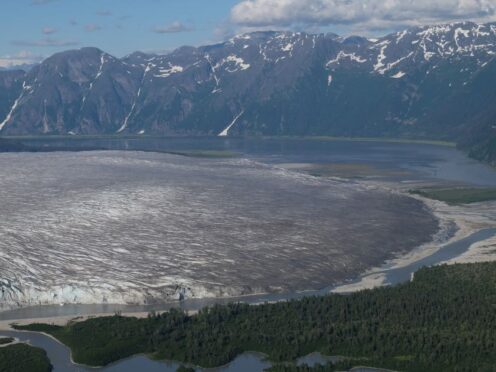
The melting of Alaskan glaciers has accelerated dramatically in recent years as the climate warms, a new study has found.
Scientists behind the study labelled the findings – which show the region’s glaciers could reach tipping points into “irreversible” retreat sooner than expected – as “incredibly worrying”.
Alaska contains some of the world’s largest plateau icefields in the world, and their melting is a significant contributor to current and future sea level rise.
The researchers also warned that the processes they saw around the Juneau icefield, which straddles the boundary between Alaska and British Columbia in Canada, are likely to affect other similar Alaskan and Canadian icefields, as well as in Greenland, Norway and other parts of the high Arctic.
The study looked at the glaciers around the Juneau icefield since 1770 when they were at their maximum extent.
Researchers from the UK, US, Austria and Norway used a combination of historical glacier inventory records, thousands of archived 20th century aerial photographs, satellite imagery and mapping of the terrain while out in the field in 2022 to build a picture of the changes over the past 250 years.
The research, published in the journal Nature Communications, showed the that between 1770 and 1979, there was a fairly consistent level of glacier volume loss, of about 0.65-1.01 cubic kilometres a year.
This then increased to 3.08-3.72 cubic kilometres a year between 1979 and 2010, and then sharply accelerated between 2010 to 2020 to reach 5.91 cubic kilometres a year.
The rates at which glaciers were shrinking across the icefield were five times faster from 2015-2019 compared to 1948-1979, the research found.
The study also found the glaciers were becoming increasingly fragmented, as well as revealing that all glaciers mapped in 2019 have receded compared to 1770 and that 108 had disappeared completely.

It warns the kind of flat “plateau” icefields of Alaska are particularly vulnerable to accelerated melting, as they experience melting across their large surface area, the ice thins down into warmer air and increasing melting, and they cannot retreat to higher elevations where they can regain equilibrium.
This means they are likely to reach thresholds or tipping points into rapid and irreversible retreat, the researchers said.
And they warn that current projections suggesting the ice loss would continue in a linear fashion until 2040, accelerating only after 2070, may need to be updated in the light of the study.
Study lead, Dr Bethan Davies, senior lecturer at Newcastle University, said: “It’s incredibly worrying that our research found a rapid acceleration since the early 21st century in the rate of glacier loss across the Juneau icefield.
“Alaskan icefields – which are predominantly flat, plateau icefields – are particularly vulnerable to accelerated melt as the climate warms since ice loss happens across the whole surface, meaning a much greater area is affected.
“Additionally, flatter ice caps and icefields cannot retreat to higher elevations and find a new equilibrium.
“As glacier thinning on the Juneau plateau continues and ice retreats to lower levels and warmer air, the feedback processes this sets in motion is likely to prevent future glacier regrowth, potentially pushing glaciers beyond a tipping point into irreversible recession.”
And she said: “This work has shown that different processes can accelerate melt, which means that current glacier projections may be too small and underestimate glacier melt in the future.”

Enjoy the convenience of having The Sunday Post delivered as a digital ePaper straight to your smartphone, tablet or computer.
Subscribe for only £5.49 a month and enjoy all the benefits of the printed paper as a digital replica.
Subscribe